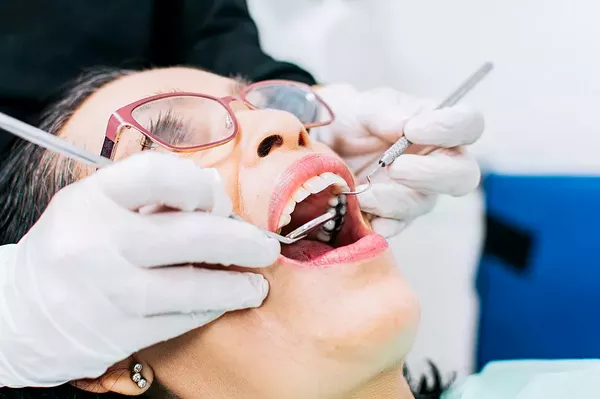Scaling Root Planing (SRP) is a non-surgical procedure used to treat gum disease, also known as periodontitis. It involves removing plaque and calculus from below the gum line and smoothing the root surfaces of teeth to promote healing and prevent further damage to the gums.
What is Scaling Root Planing?
Scaling and root planing is a deep cleaning procedure performed by a dental professional. It is used to treat gum disease, which is caused by bacteria in plaque that accumulates on teeth and gums. When left untreated, gum disease can lead to tooth loss and other serious health problems.
Scaling is the process of removing hardened plaque, also known as tartar or calculus, from above and below the gum line using specialized tools. Root planing, on the other hand, involves smoothing the surface of the roots of teeth to remove rough areas where bacteria can accumulate.
The procedure typically takes multiple visits to complete, with each visit focusing on one section of the mouth at a time. Local anesthesia may be used to alleviate any discomfort during the procedure.
Why is SRP Necessary?
Scaling Root Planing is necessary because gum disease cannot be cured but can only be managed. The goal of SRP is to remove the bacterial buildup that causes inflammation and infection in the gums. This, in turn, promotes healing and helps prevent further damage to the gums and teeth.
When gum disease goes untreated, it can progress to more advanced stages, such as periodontitis. At this stage, the gums begin to pull away from the teeth, creating pockets where bacteria can accumulate and cause further damage. Scaling and root planing can help prevent the progression of gum disease, thereby protecting oral health.
Who Needs SRP?
SRP is typically recommended for patients who have been diagnosed with gum disease. Symptoms of gum disease include bleeding gums, bad breath, loose or shifting teeth, and receding gums. However, not all patients with gum disease require SRP. The severity of the condition and the individual’s overall oral health will determine whether or not scaling and root planing is necessary.
Patients who have a history of gum disease, smoke, or have poor oral hygiene may also be recommended for SRP as a preventative measure.
What to Expect During and After SRP?
Before the procedure, the dentist will examine the mouth to determine the extent of the gum disease and any other underlying issues that may need to be addressed. If local anesthesia is used, the patient will feel numbness in the treated area during the procedure.
After the procedure, the gums may be sore and swollen for a few days. Patients may need to avoid hard or crunchy foods for a few days to allow the gums time to heal. It is important to maintain good oral hygiene practices following SRP to prevent the recurrence of gum disease.
Conclusion
Scaling Root Planing is a common non-surgical procedure used to treat gum disease. It involves removing plaque and calculus from below the gum line and smoothing the root surfaces of teeth to promote healing and prevent further damage to the gums. While not all patients with gum disease require SRP, it can help prevent the progression of the disease and protect oral health.
Related Topics:
































